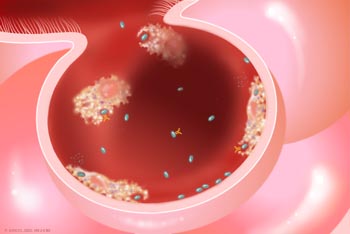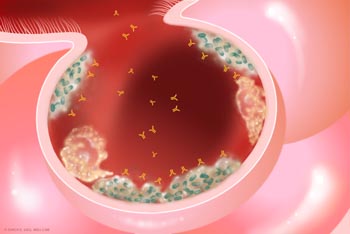Biofilm strategies: Detachment
Practical Implications
Bacterial cells may detach from biofilms individually or in clumps. When they detach in clumps, they retain the reduced susceptibility to antimicrobials characteristic of biofilms. In the right conditions, biofilms can also migrate across surfaces over a period of time.
All materials have certain properties of elastic solids and viscous fluids. Biofilms appear to show aspects of both solids and liquids—much like slug slime—and fall into a category called "viscoelastic." However, as biofilms collect sediment, or become scaled with rust or calcium deposits, they become less fluid and more like a brittle solid.
We are currently using a non-destructive in situ technique, developed in the lab, to study the fundamental aspects of biofilm rheology (deformation and flow). This may help us understand how the interaction between a flowing liquid and the viscoelastic biofilms may result in detachment and the potential dissemination of infection and transmission of pathogens.
Health Implications of Aspirating Biofilm Fragments
 |
 |
|
(Above) People with strong immune systems in normal |
(Above) If biofilm fragments are inhaled or aspirated in |

